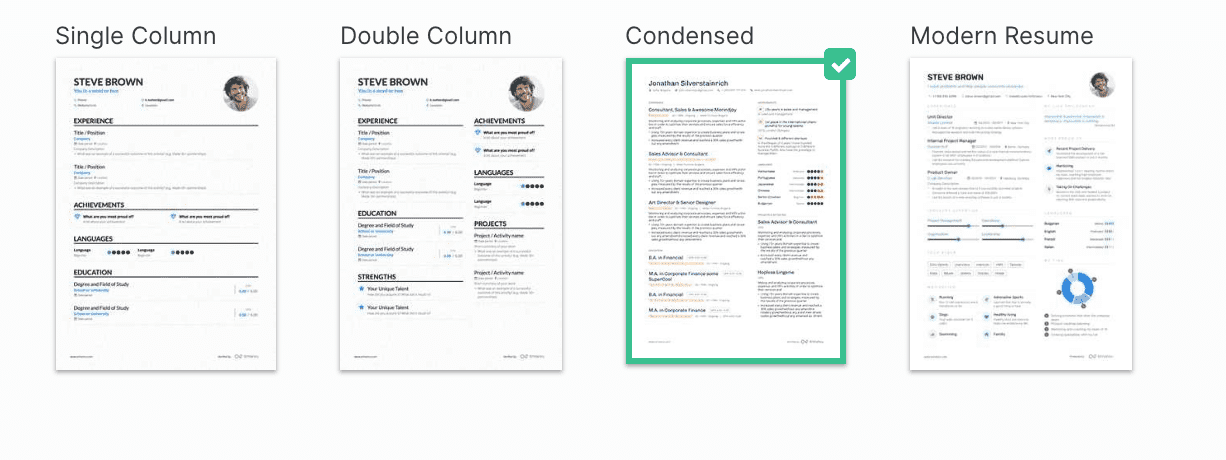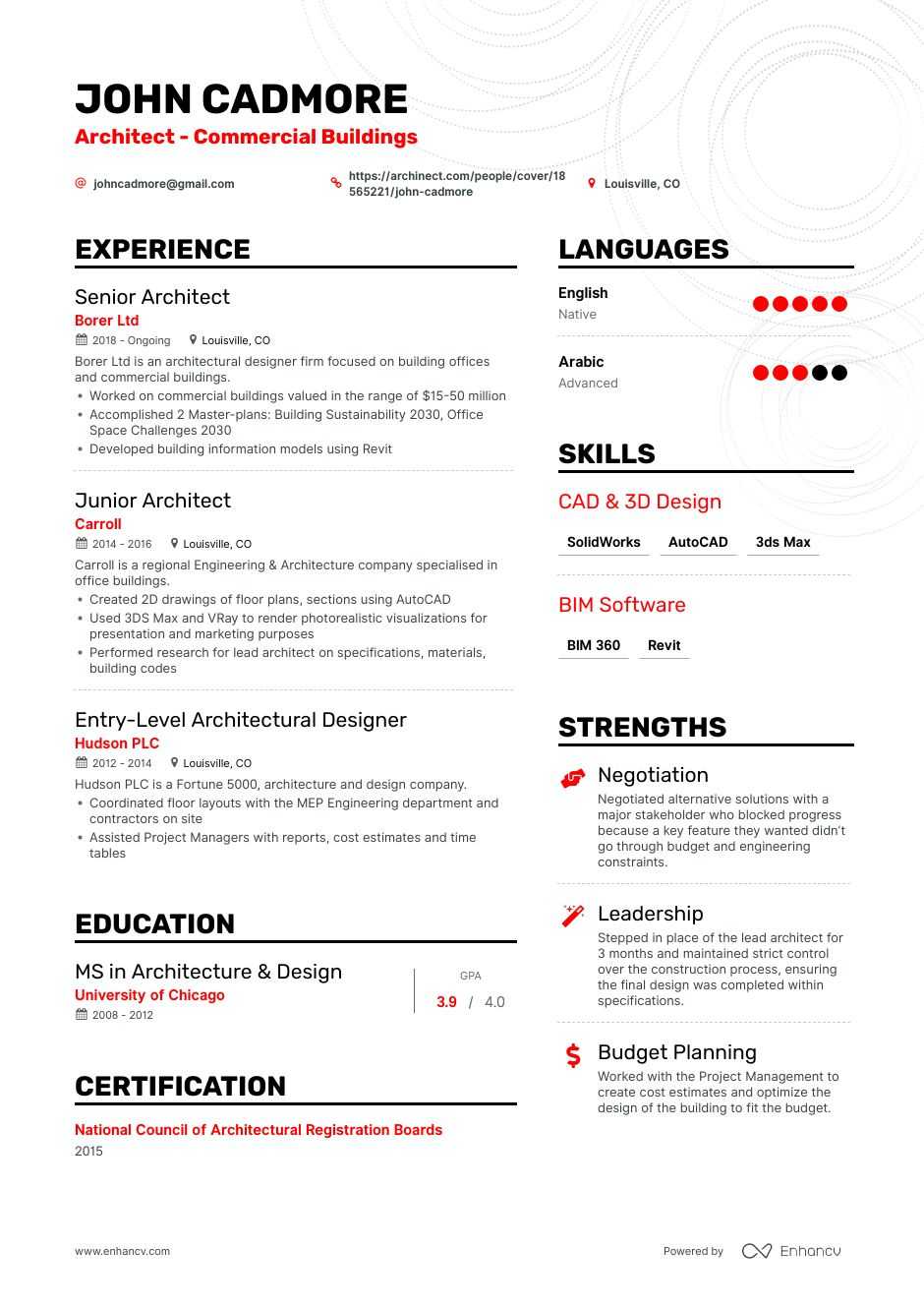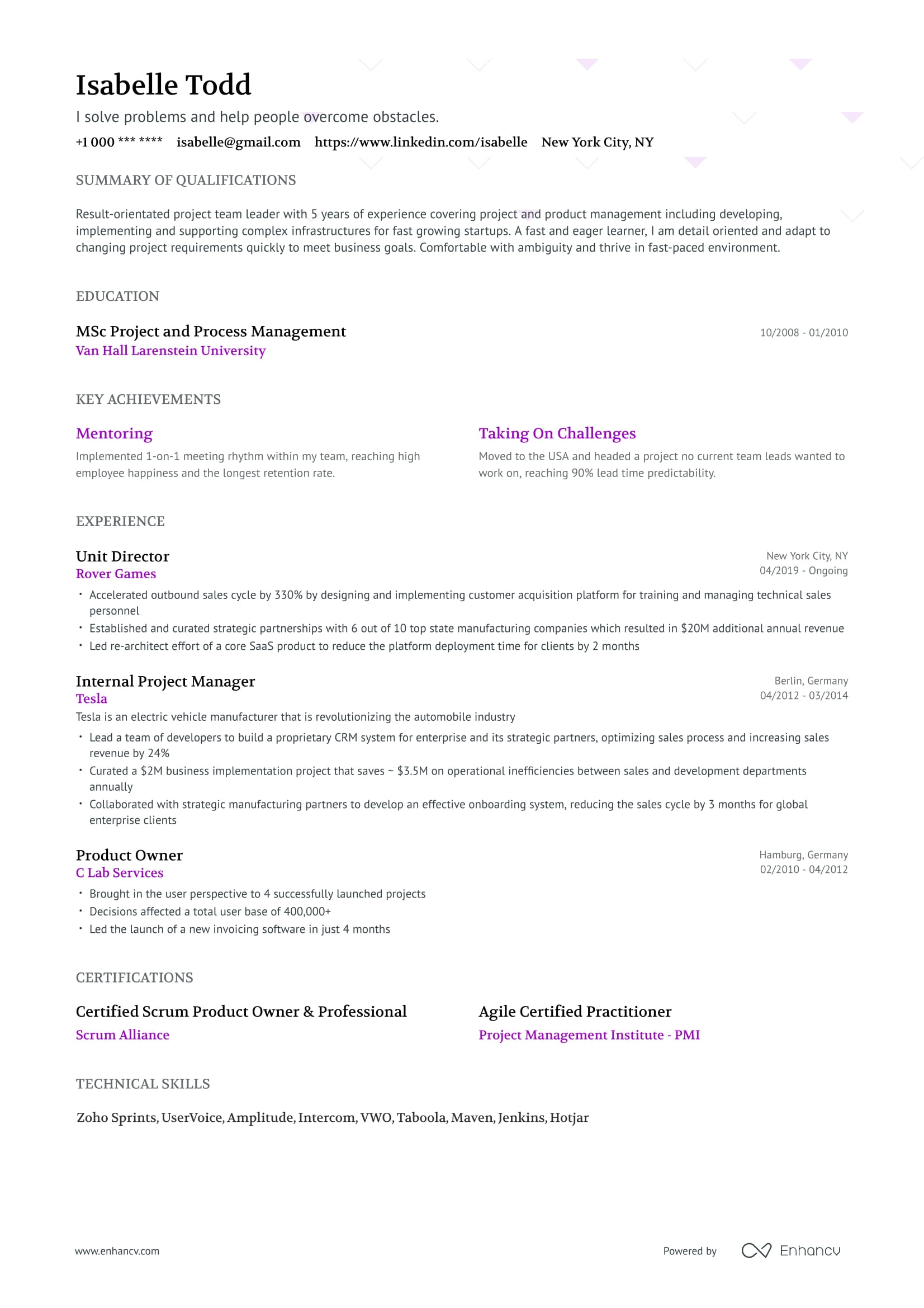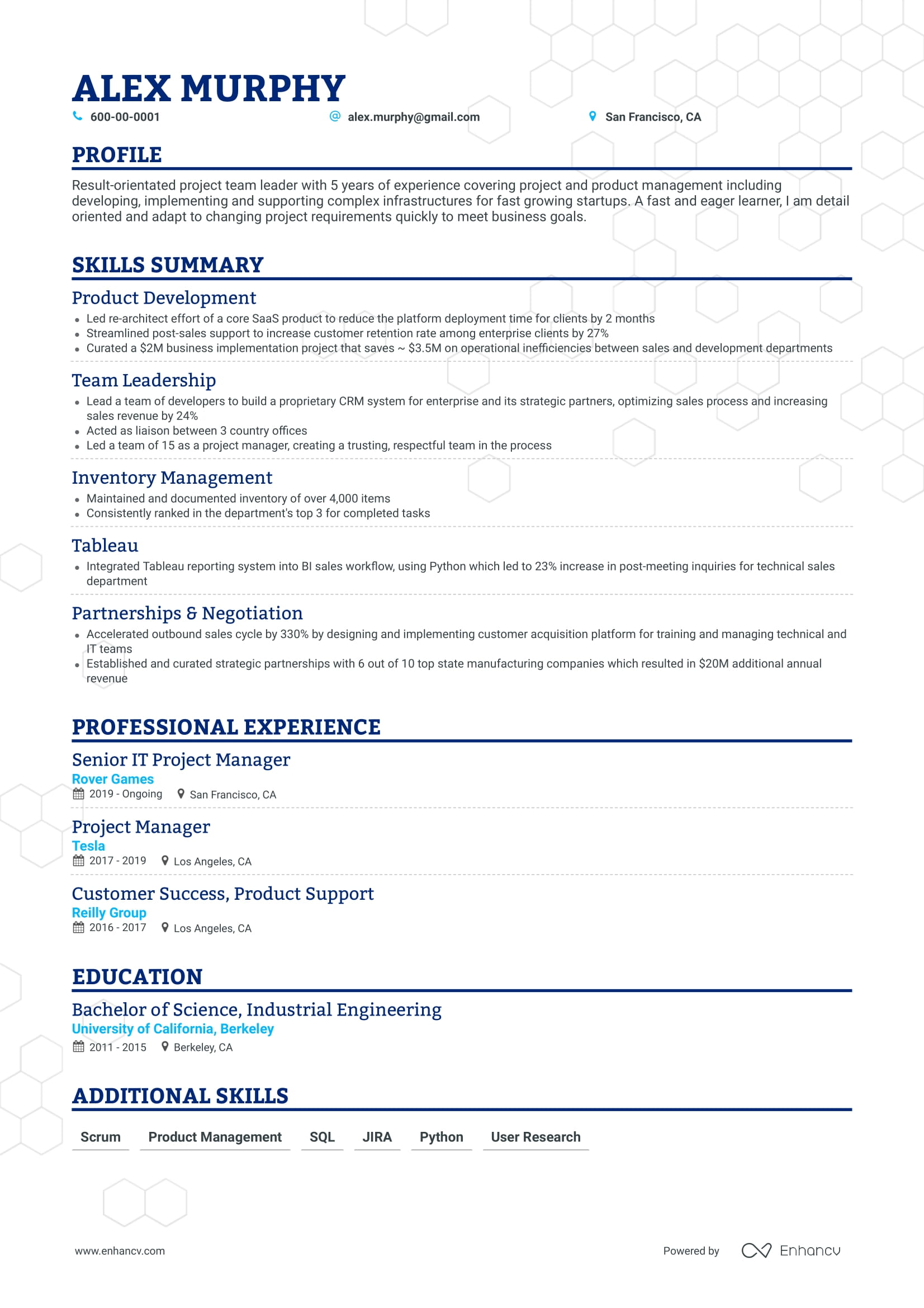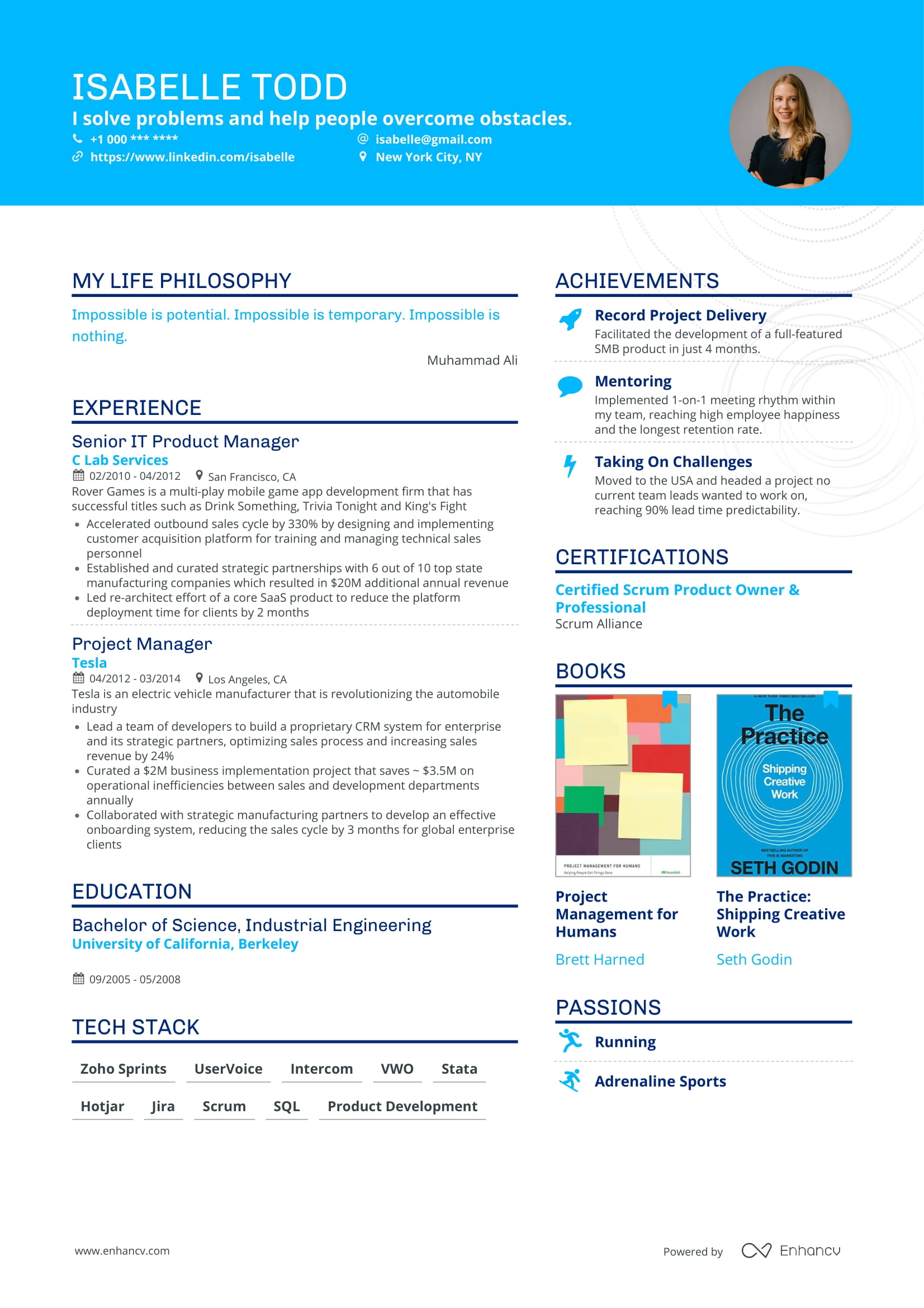Example Architect Resume - Browse more resume templates and build a stand-out resume
As an architect, you contribute to make our environment more accommodating and harmonious.
As the meeting point of art, engineering and social science, architecture touches every aspect of our lives:
- The demand for energy-efficient, sustainable and cost-effective housing becomes a key concern for urban planners.
- The infrastructure that makes our lives possible is facing increasing difficulty keeping up with our transportation needs.
- Public areas desperately gasp for fresh air and life which struggles to penetrate heavily urbanized communities.
But before you hit the drawing board, let’s talk about getting a job as an architect.
Even though the Bureau of Labor Statistics projects asteady 8% growth for the architecture industry in the next decade, don’t expect to get a job, easily.
Withmore than 10,000 architects graduating each year and an active workforce of over 370,000 nationally, you should expect significant competition when applying to architecture positions.
Why are you not landing architecture interviews?
Job-seekers, often put together an architecture resume in 5 minutes and spend days applying to every possible architecture position they find online.
Relying purely on bulk numbers is, in fact, the least effective strategy for getting hired fast.
Recruiters spend just half a minute reading through your architecture resume. If you send them a botched generic CV, it’ll likely last 5 seconds before being thrown in the bin.
Project managers and developers are looking for architects who demonstrate passion and willingness to put in the extra effort. This may well be you, but if it’s not immediately obvious from your architecture resume, you won’t get a callback.
Put the effort in the right place!
Stick with us and we’ll help you write a masterpiece architecture resume worthy of Perkins + Will.
What you’ll learn from this Architecture resume writing guide
- Deconstruct 8+ resumes of real architects and architecture students
- Study the employer’s profile and job description to create the core of your architecture resume
- Use the proper language and keywords to become more relevant to your employer
- Learn about the common sections and layouts of successful architecture resumes
- Master your word usage efficiency to convey the maximum amount of information using very little space
- Create an impact and wow your recruiters. Leave them thinking about you when they’re reading other applicants’ resumes
- Get way more interviews for architectural positions using our comprehensive 2019 writing guide
Architecture resume example
How to write an Architect resume
The first and most critical rule about creating an architecture resume is keeping it short.
It’s not a cover letter and it’s certainly not an autobiography. A resume is just one page long.
Even senior architects with decades of experience, dozens of buildings and awards under their names have one-page-long resumes.
Sure, if you’re Frank Gehry, you can have a second page, although he doesn’t need one.
The purpose of a resume is not to list every possible skill, achievement or project you worked on. Its job is to convince the recruiter you have the necessary qualifications and experience to occupy the given position.
You will have the opportunity to expand on everything else during your interview if you get to that stage.
To make your architect resume relevant, start by analyzing the job description:
- What are the mandatory requirements - qualifications, level of degree, years of experience?
You either have these, or you don’t. You may or may not mitigate the lack of a Master’s Degree even if you have sufficient years of experience and possess an NCARB-license.
- What skills are needed for the job - software and drafting, management, communication with clients and contractors?
Ideally, you possess every skill and experience listed in the job advert. Even if you don’t, some creative resume writing can put you miles ahead of the competition.
Recruiters don’t really read resumes like you read a book. They scan and look for certain keywords that match a predetermined profile. If they find them, you’ll get a second chance and maybe get invited for an interview.
Otherwise, your application is probably going to the shredder.
You want to help your recruiter scan your architect resume quickly and easily. Your first step is to choose the proper resume layout.
How to choose the proper Architect Resume layout
In order to fit as much information as possible and maintain your resume clearly readable, you should consider one of the following common formats:
- Single-column - Use this layout for architecture student resumes. Students have less relevant experience and projects, so a centered column will focus readers on the few items that really matter.
- Double-column - Professional architects with a handful of completed projects will find it challenging to organize all their information and keep their resume light and readable. The two-column layout will help you separate different sections of information.
- Modern - Architecture is a design-heavy profession, so the modern resume layout can be very effective and showcase your graphic design skills. Just be mindful that heavy graphics can distract and even misinform recruiters.
- Condensed - Senior architects will need every bit of space to list their projects, awards, and certifications. The condensed resume fits the maximum amount of information compared to other layouts.
Whichever layout you choose, keep in mind your recruiter will expect to see a handful of core sections. Make sure you’re not throwing them an oddball they can’t make sense of.
These are the must-have Architecture resume sections
- Header containing basic contact information like your name, professional title, address, phone, and email. Don’t forget about your portfolio too.
- Resume summary briefly explaining your background, architectural qualifications, and job expectations.
- Architecture experience - which companies you worked for, what projects did you take part in? Ideally, this is relevant to the position you’re applying for.
- Skills section - detail your relevant technical, software and interpersonal skills. You’d be surprised how valuable this section is.
- The education and certification section will provide proof and backup of the claims you’ve made so far.
- Awards and notable achievements - being an architect you may have a few completed projects that bare bragging rights.
The content of your architecture resume will vary greatly. There is no magic formula to fit each and every job application.
But you could develop each section as a stand-alone element and fine-tune it for new job posting you’re applying to.
Here’s what recruiters value in professional Architect resumes
- Brevity - If you’re resume is excessively long, filled with fluff or distracting information, hiring managers may not give you a chance to prove your worth.
- Relevancy- It doesn’t matter who you are or what you. If you’re not relevant to the position the company is looking to fill, you’re not getting hired.
- Specific experience- Architecture firms often take new hires for specific projects. 10 years in residential architecture doesn’t automatically qualify you for working on public spaces.
- CAD software - You need to showcase excellent knowledge in CAD programs like Revit, Rhino, 3DS Max, Maya, AutoCAD and others.
- Progression- You’ll hardly impress a recruiter if you’ve sat in the same place for 10 years. Forward-thinking companies are looking for professionals who grow with the job.
Keep on reading.
We’ll discuss each resume section in detail and provide live examples of architecture resumes with good and bad practices.
Don’t underestimate the importance of your Architecture resume header
Sitting proudly at the top of the page is your header section. Architects think the header is a functional element and thus not open to a lot of creativity.
That’s not entirely true. You can usually squeeze just a little bit more detail in and provoke the recruiter to keep reading.
We’ll prove it with a few architect resume examples
2 Architecture resume header examples
On first glance, this is what you’d expect to see on a header section - name, title and contact information.
However, architecture has a number of niches and the title can certainly be made more descriptive.
But wait, isn’t there something really important missing here? Who sends in their architecture resume without a link to their portfolio?
This professional title is much more descriptive and instantly lets managers know what projects you’ve worked on.
In creative professions such as architecture, hiring managers often skip immediately to the candidate’s portfolio. Their resume is worth reading only of the portfolio is promising and relevant to the position.
From your portfolio, recruiters can judge your architectural experience, see examples of projects you’ve worked on, assess your CAD and graphic design abilities, as well as your presentation skills.
You can’t afford to miss such an important detail!
How to weave your professional story in a crisp Architect resume summary
The resume summary gives recruiters a 10-second glimpse into your entire career. It’s one of the first things somebody reads about you and will decide whether they read any more.
A well crafted summary can impact hiring managers and force them to read more. A bad summary can sink your whole application. Reviewers may not even look at your portfolio or work experience.
We’ll analyze two architecture resume examples.
2 Architecture resume summary samples
Okay, this architect has their motivation in the right place, however, their professional summary is too long. It looks more like a cover letter than something to put on your architect’s resume.
At the same time, it’s missing a few very important details:
- Does the candidate have any work experience?
- What CAD and 3D modelling software are they familiar with?
- What other skills can they contribute to their prospective employer?
On the plus side, they talk passionately about architecture and produce an impact. But not many lead architects will commit to read this block of text on the first pass.
Now this is a well-formulated architecture summary. The candidate does a great job compacting their education, accreditation and experience in just a few sentences.
The resume conveys the same passion for green building design while sharing much more facts about their experience and skills in roughly half the length.
This architect resume sample is focused and optimized.
What’s the secret behind a functional Architecture resume experience
Recruiters will mostly just scan other sections of your architectural resume. The work experience section is the only one they will read in full before making a decision to call you in.
When managers read about your work experience, they want to see specific examples and details of your work.
Most of all, they are interested in how you contributed to the organization:
- Did you demonstrate leadership and problem-solving?
- How did you negotiate the investors’ preferences and the engineering limitations?
- What innovations and forward-looking ideas did you implement in the projects you worked on?
- Did you use your resources effectively?
Check out the next couple of architect resume examples:
2 Architect resume experience samples
This work experience is a small disaster.
The applicant is extremely vague and provides no meaningful information about their work.
Every hiring manager knows what the responsibilities of junior architects are. They held them longer than you have. So, don’t bother with generic job descriptions.
Focus on your actual contributions:
- What problems did you solve?
- How did you grow on the job?
- Showcase the value of your work
Let’s see a better architecture resume example:
This work experience is significantly better.
The candidate still lists their work responsibilities as items. However, they also provide specific details about their work and their contribution to the project.
There is specific information about their CAD and 3D modelling skills. Furthermore, they have demonstrated interpersonal skills, project management abilities and proactive attitude.
If you had to choose between these two candidates, which one would you pick?
Make sure you go through the job description again. Try to match the keywords and phrases and apply them to your own work experience. The more relevant your work experience is, the higher your chances of landing an interview.
How to list your skills the right way
Big construction companies and architecture houses regularly employ automated tracking software.
When you apply for a given position, your architect’s resume is scanned by the software first. Only the ones which match the required parameters are forwarded to the hiring managers.
In this light, a skills section is a vital part of any successful architect’s resume. It fills potential gaps, targeting keywords related to architecture, drafting, 3D modelling as well as your potential employer’s specific industry.
How should technical skills look like on your resume
As an architect, your resume should demonstrate a vast range of skills - technical, civil engineering, 2D and 3D design software, art.
You have limited space, so start with the ones most relevant to your new job.
Check out this architect resume sample:
Here are some more ideas about skills which are useful to architects.
Top 20 technical skills for Architecture resume
- Urban planning
- Civil engineering
- Statics
- Dynamics
- Strength of materials
- Material science
- Energy efficiency
- Heating and cooling
- Plumbing
- Electricity
- Architectural / Engineering calculations
- Drafting
- AutoCAD
- DraftSide
- TurboCAD
- LibreCAD
- 3D modelling and product rendering
- Sketchup
- 3ds Max
- Maya
- Rhino 3D
- BIM software
- BIM 360
- Revit
- Bluebeam Revu
- ArchiCAD
- Animation and special effects
- Graphic design
- Photoshop
- Illustrator
- InDesign
- 3D printing and prototyping
- Sketching
- Drawing
- Painting
- Crafts
- Wood-working
- Clay modelling
- Sculpting
- Sewing
- Interior design
- Industrial design
- Ergonomics
How to describe soft skills on your resume
Soft skills are just as important when you work in a real-world environment. Architects collaborate with engineers, contractors, clients, stakeholders, suppliers and local authorities and government employees.
Your communication and documentation management abilities must be flawless if you want to successfully negotiate your designs and push projects forward.
Here is well-formatted architect resume example:
There are plenty of soft skills you can add to this section. Just look at what your employer will need you to do and add the skills most suitable to complete the job.
Here are some more ideas.
These are the most wanted Architecture soft skills on resumes
- Analytical thinking
- Logic and common sense
- Creativity and thinking outside the box
- Working with constraints
- Working under pressure
- Project management
- Time scales
- Cost estimates
- Project optimization
- Bids
- Communication
- Negotiation
- Reports
- Reading contracts, building codes and other documents
- Calling contractors and stakeholders
- Presenting to higher management or clients
- Motivation
- Self-starter and proactive worker
- Team player and strong collaborator
- Facilitator and problem-solver
Do I need to add an education section to my Architect resume?
You need a minimum of a Bachelor’s degree to practice architecture, so your degree has a reserved space on your resume.
That said, thousands of other architecture students take the same courses. In order to stand out, you should avoid excessive details about your studies.
Professionals with more than 1 year of experience can trim down their education section to the bare essentials:
- Level and title of degree
- Graduation year
- University granting the degree
Any interesting projects can find a place in your work experience section or get reduced to a skill you’ve picked up along the way.
Architecture students can ignore this advice since their education usually dictates most of their experience, skills and practical projects.
If you’re targeting an internship and have a high GPA, make sure to include that, as it can be a differentiating factor.
What’s the best place for a certificate on my Architecture resume?
Similar to engineers, architects need licenses in order to practice independently. An NCARB license signifies you can be trusted to design, safe, functional, aesthetic and high-performing buildings and other public structures.
Top 4 Architecture certificates and memberships for your resume
Other sections to consider for an Architecture resume
Depending on your experience you can consider adding an awards section or highlight a specific project you’re most proud of.
Keep in mind your architecture resume is already crowded, so only do this if you believe such a section will give you an edge over other applicants.
How to create a job-winning Architect resume?
- Start from the job description and extract the core criteria and required experience, most relevant skills, CAD programs, projects and other keywords
- Make your architectural resume one page long and choose an appropriate layout
- Include the basic sections - header, summary, work experience, skills, education and certification
- Use the full potential of your header section and don’t forget to add your portfolio link
- Make your professional summary compact, list your experience, architecture degree and most relevant skills
- Expand on your skills and abilities in the work experience section. Make sure to build a connection between your old and new job.
- Use the skill section to plug any holes left by other sections in your resume. Ensure ATS systems don’t sandbox your resume.
- Make sure your architecture degree is clearly listed and prominently displayed on your resume.


